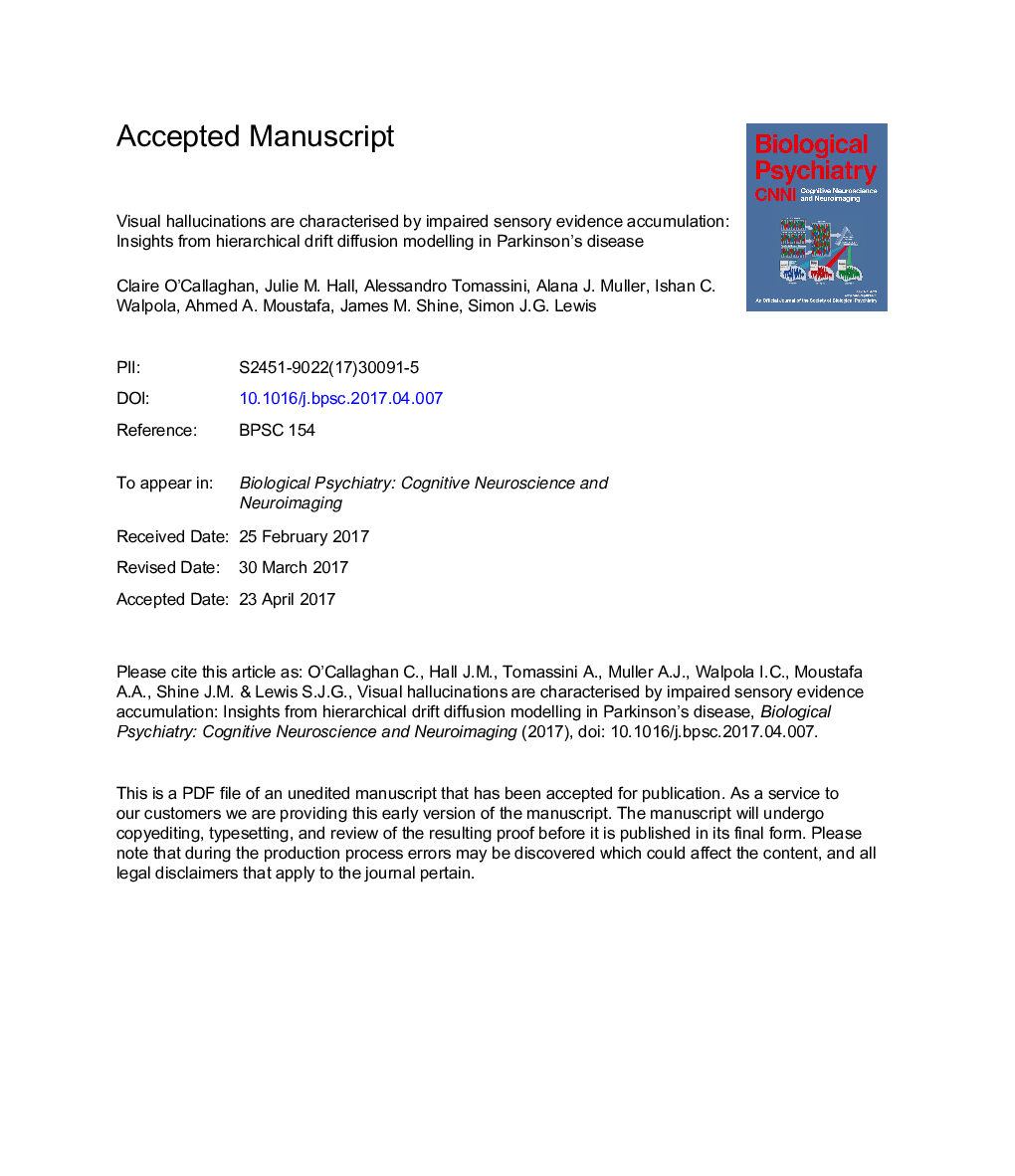| Article ID | Journal | Published Year | Pages | File Type |
|---|---|---|---|---|
| 8814640 | Biological Psychiatry: Cognitive Neuroscience and Neuroimaging | 2017 | 26 Pages |
Abstract
We integrate these results with evidence accumulation and predictive coding models of hallucinations, suggesting that in PD sensory evidence is less informative and may therefore be down-weighted, resulting in overreliance on top-down influences. Considering impaired drift rates as an approximation of reduced sensory precision, our findings provide a novel computational framework to specify impairments in sensory processing that contribute to development of visual hallucinations.
Related Topics
Life Sciences
Neuroscience
Biological Psychiatry
Authors
Claire O'Callaghan, Julie M. Hall, Alessandro Tomassini, Alana J. Muller, Ishan C. Walpola, Ahmed A. Moustafa, James M. Shine, Simon J.G. Lewis,
